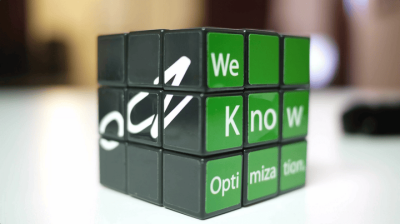來源: 失傳科技 發表時間:2024-10-27 08:29:26 熱度:7
OCZ Technology: Gone But Not Forgotten
The Overclockerz Store
By Shawn Knight July 22, 2020

Serving tech enthusiasts for over 25 years. TechSpot means tech analysis and advice you can trust. When you buy through our links, we may earn a commission.
Most Popular
OCZ Technology was founded in 2000 by Ryan Petersen as "The Overclockerz Store," an online hardware reseller that catered to computer enthusiasts. The company started out selling binned processors and memory kits capable of running faster than their rated speeds - items which overclockers were willing to pay a premium for.
Eventually, Petersen parlayed the store's success into a mainstream PC component business, which became OCZ Technology. The San Jose-based firm rapidly expanded into multiple categories, including branded video cards, keyboards, mice, and even explored more exotic offerings like the Cryo-Z phase change cooling system.

OCZ Technology RevoDrive 3 PCIe SSD
In 2007, OCZ shored up its power supply business by acquiring PC Power & Cooling, one of the most well-respected firms in the industry at the time.
A year later, OCZ partnered with Johnathan "Fatal1ty" Wendel to design a range of memory and power supplies for gamers. Most, however, will remember the company for its contributions and advancement of early solid-state drive technology.

Power supplies under the OCZ Technology banner on display at CES 2012
OCZ introduced its first 2.5-inch SATA II SSDs in March 2008. That was over a year before Microsoft released Windows 7, the first version of the operating system designed to work with solid state drives. The drives, offered in capacities of 32GB and 64GB, featured read and write speeds of up to 100MB/s and 80MB/s, respectively, and utilized no moving parts.
The latter made them a potentially attractive alternative for notebook and laptop enthusiasts concerned with mechanical hard drive failure.

A first-gen 30GB OCZ Vertex SSD alongside a 240GB Vertex 3 engineering sample
As is often the case with a new category of technology, there were a lot of wrinkles to iron out before marketing the tech to mainstream consumers.
Early examples didn't deliver the blistering speeds that today's drives are known for. In fact, performance could be quite inconsistent, especially if you didn't use an alignment tool to specify the optimal drive offset when setting everything up. Then there were issues with garbage collection and concerns over flash memory endurance.
SSDs eventually found their way into the mainstream, you could argue in part due to OCZ's contributions to push the technology forward.

An Indilinx controller on an OCZ Technology SSD PCB at CES 2012
The company continued to iterate and experiment with different controllers and firmware, going so far as to exit the DRAM market and acquire flash memory specialist Indilinx just a few months later.
Pricing remained a concern as flash memory was an order of magnitude more expensive than traditional spinning media, but the performance gains that were finally materializing started making the juice worth the squeeze. Once enthusiasts started making the jump, it wasn't long before the rest of the industry followed suit.
OCZ released a plethora of SSDs over the next several years, each a bit more reliable and faster than before. We reviewed several of them. Higher-end devices like the RevoDrive further pushed the envelope, and the company even branched out into the enterprise space. In the end, however, it would all come crashing down.

Various OCZ Technology SSDs on display at CES 2012
In September 2012, founder and CEO Ryan Petersen resigned from the company. Accounting and other legal issues would plague the business over the next year and in late 2013, it was revealed that Toshiba had agreed to buy nearly all of OCZ's assets for $35 million.
Toshiba said it would continue to run the business as a subsidiary called OCZ Storage Solutions. The Japanese tech giant did release some new OCZ-branded drives but ultimately, OCZ was dissolved and absorbed into Toshiba's memory group, later named Kioxia.

OCZ Cryo-Z phase change cooler at CES 2007
OCZ had its fair share of issues over the years and wasn't always the first choice among shoppers. But the outfit did have a hand in helping to make overclocking more mainstream and certainly pushed solid-state drives in the right direction.
Today, OCZ exists as "an SSD brand offered by Kioxia for the consumer market," according to its website. The latest press release from the brand is dated January 8, 2018, for the RC100 NVMe SSD.
附OPENL翻譯:
OCZ科技:消失但未被遺忘 超頻者商店 肖恩·奈特 2020年7月22日 服務科技愛好者超過25年。TechSpot意味着你可以信賴的技術分析和建議。 通過我們的鏈接購买時,我們可能會賺取傭金。 最受歡迎
54條評論 Netscape發生了什么? 46條評論 在一個令人震驚的舉動中,Arm取消了高通制造Snapdragon芯片的許可 科學家們解鎖了一種更快、更便宜的DNA數據存儲方法 66條評論 英特爾Core Ultra 9 285K評測:Arrow Lake一團糟
Facebook Twitter Reddit RSS 評論
OCZ科技於2000年由瑞安·彼得森創立,最初名爲“超頻者商店”,是一家面向電腦愛好者的在线硬件轉售商。公司最初銷售經過篩選的處理器和內存套件,這些產品能夠以高於其額定速度的速度運行——超頻者愿意爲此支付溢價。
最終,彼得森將商店的成功轉變爲一家主流PC組件業務,成爲OCZ科技。這家位於聖荷西的公司迅速擴展到多個類別,包括品牌顯卡、鍵盤、鼠標,甚至探索了更爲獨特的產品,如Cryo-Z相變冷卻系統。
OCZ科技RevoDrive 3 PCIe SSD
2007年,OCZ通過收購當時業界最受尊敬的公司之一PC Power & Cooling來鞏固其電源業務。
一年後,OCZ與約翰·“Fatal1ty”·溫德爾合作,爲遊戲玩家設計了一系列內存和電源供應器。然而,大多數人會記住這家公司對早期固態硬盤技術的貢獻和推動。
2012年CES展上展示的OCZ科技品牌電源供應器
OCZ於2008年3月推出了首款2.5英寸SATA II SSD。這比微軟發布Windows 7(第一個爲固態硬盤設計的操作系統版本)早了一年多。這些驅動器提供32GB和64GB的容量,讀寫速度分別高達100MB/s和80MB/s,並且沒有任何活動部件。
後者使它們成爲關注機械硬盤故障的筆記本和筆記本電腦愛好者的潛在吸引力替代品。
第一代30GB OCZ Vertex SSD與240GB Vertex 3工程樣品並排展示
通常情況下,新的技術類別在向主流消費者營銷之前需要解決許多問題。
早期的例子並沒有提供今天的驅動器所知的驚人速度。實際上,性能可能相當不穩定,尤其是在設置時如果沒有使用對齊工具來指定最佳驅動器偏移量。此外,還有垃圾回收問題和對閃存耐用性的擔憂。
SSD最終進入了主流市場,可以說部分是由於OCZ對推動技術發展的貢獻。
2012年CES上OCZ Technology SSD PCB上的Indilinx控制器
該公司繼續迭代和實驗不同的控制器和固件,甚至在幾個月後退出了DRAM市場並收購了閃存專家Indilinx。
由於閃存的價格比傳統旋轉媒體貴了一個數量級,定價仍然是一個問題,但最終顯現出的性能提升开始讓人覺得物有所值。一旦發燒友开始跳入,整個行業也很快跟隨其後。
OCZ在接下來的幾年中發布了大量SSD,每一款都比之前更可靠、更快。我們評測了其中幾款。像RevoDrive這樣的高端設備進一步推動了技術的邊界,公司甚至拓展到了企業市場。然而,最終一切都崩潰了。
2012年CES上展出的各種OCZ Technology SSD
2012年9月,創始人兼CEO Ryan Petersen辭去了公司職務。會計和其他法律問題在接下來的一年裏困擾着公司,2013年底,披露了東芝同意以3500萬美元收購OCZ幾乎所有資產的消息。
東芝表示將繼續以名爲OCZ存儲解決方案的子公司運營該業務。這家日本科技巨頭確實發布了一些新的OCZ品牌硬盤,但最終,OCZ被解散並並入東芝的內存部門,後來更名爲Kioxia。
OCZ Cryo-Z相變冷卻器在2007年CES展會上展示
多年來,OCZ經歷了不少問題,並不總是消費者的首選。但該公司確實在推動超頻更爲主流化方面發揮了作用,並且在固態硬盤的發展上做出了積極貢獻。
根據其網站,今天的OCZ作爲“Kioxia爲消費者市場提供的SSD品牌”存在。該品牌最新的新聞稿日期爲2018年1月8日,內容爲RC100 NVMe SSD。
標題:轉OCZ Technology: Gone But Not Forgotten(附AI翻譯)
地址:https://www.vogueseek.com/post/96062.html
鄭重聲明:本文版權歸原作者所有,轉載文章僅為傳播信息之目的,不構成任何投資建議,如有侵權行為,請第一時間聯絡我們修改或刪除,多謝。
上一篇 : 黃聖依:浪姐舞台上的獨特光芒,五官之外的氣質之美!
下一篇 : ZARA系持續大撤退,國際快時尚巨頭怎么敗退的?
